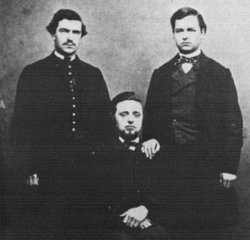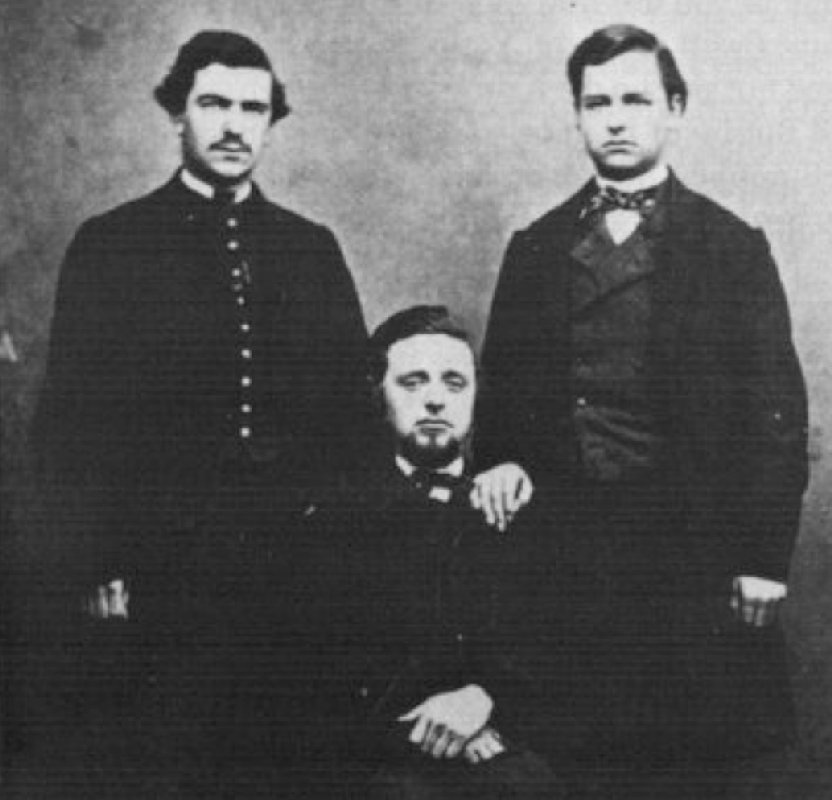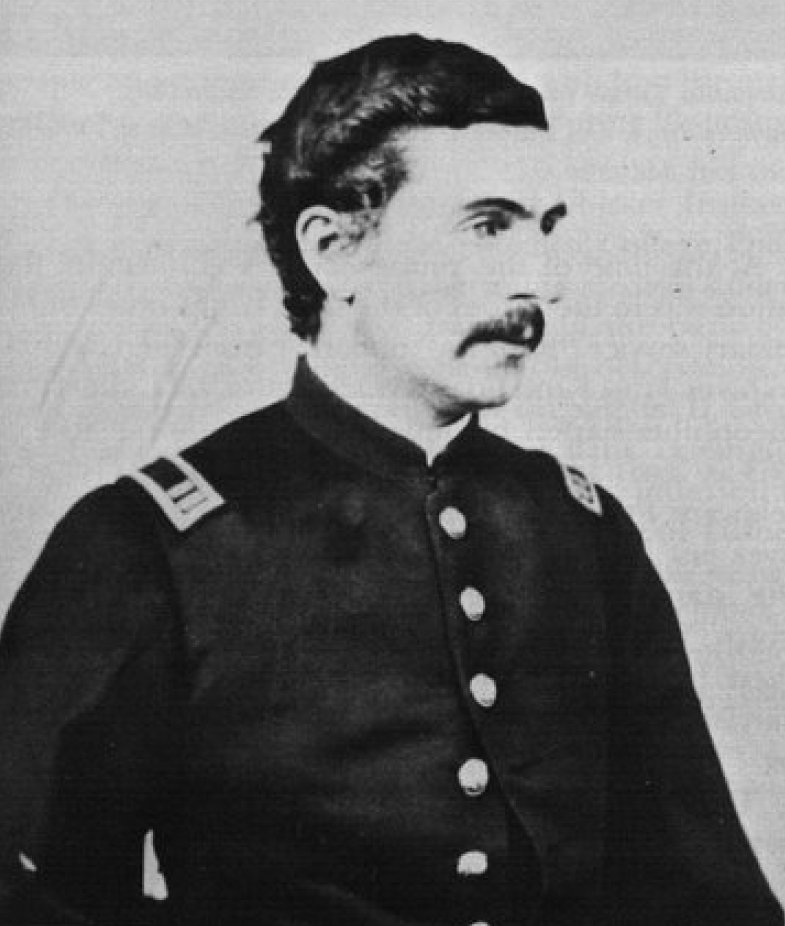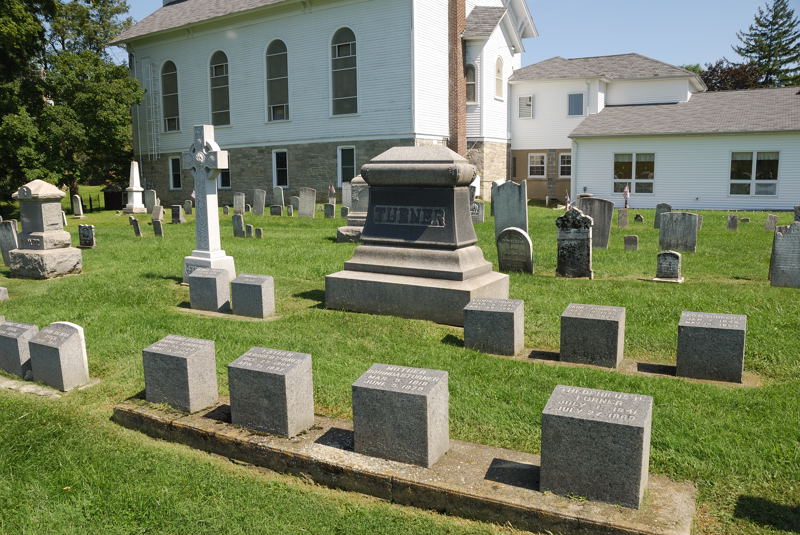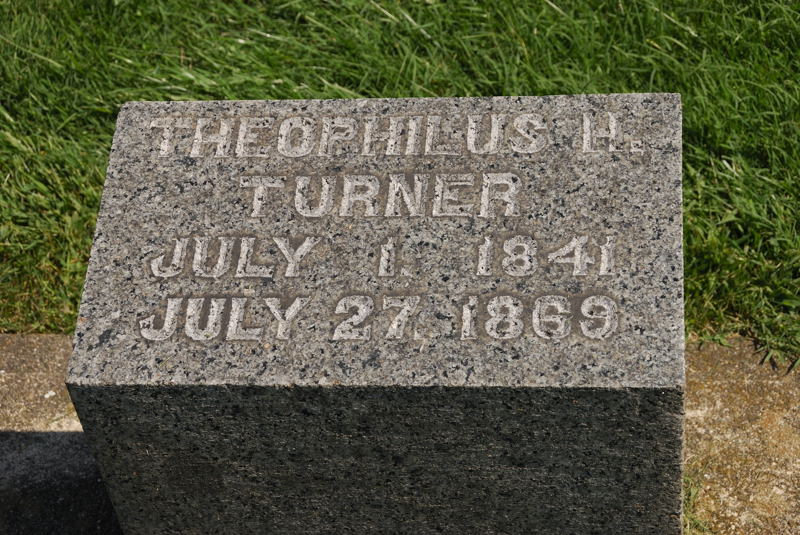Five months later, he joined the regular United States Army, and was commissioned as a 1st Lieutenant and Assistant Surgeon on February 28, 1866. Promoted to Captain, he was sent to Kansas. After spending several months at Fort Dodge on the Santa Fe Trail, he was transferred northwest to Fort Wallace in far western Kansas, along the Butterfield Overland Despatch route (Smoky Hill Trail) to Denver. The trail was also the route of the Union Pacific Railroad that was, at the time, being constructed from Kansas City to Denver.
As post surgeon, Turner was a respected doctor and participated in the relief of the troops at the battle of Beecher's Island (September, 1868). He was also a keen observer of his surroundings, often collecting minerals and other scientific specimens.
In early 1867, while stationed at Fort Wallace, Kansas, he discovered the bones of a giant fossil in Pierre Shale near McAllaster Butte, some 15 miles northeast of the fort. He sent three of the vertebrae from the remains to E.D. Cope at the Academy of Natural Sciences of Philadelphia.
Cope recognized it as a new kind of a swimming reptile called a plesiosaur, and convinced Turner to dig up the specimen and send it to him
In December 1867, Doctor Turner, with help from soldiers at Fort Wallace, dug up the rest of the specimen, some 900 pounds of bones and concretions containing bones. In February 1868, the bones were shipped by wagon about 90 miles east to where the railroad was being constructed. The crates were loaded on a railroad car and eventually delivered to Cope in Philadelphia. Although not a paleontologist, Turner had collected the largest fossil ever dug up at the time.
Cope examined the material and named the extinct animal, Elasmosaurus platyurus. Although Turner was able to visit the Academy in 1868 while on leave, he never met E.D. Cope in person. The famous skeleton that Turner discovered remains in collection of the Academy of Natural Sciences of Philadelphia.
After returning to Fort Wallace, became sick and died on July 27, 1869. Originally buried in the Fort Wallace Cemetery, his body was later re-interred in the family plot in Hope, New Jersey.
Five months later, he joined the regular United States Army, and was commissioned as a 1st Lieutenant and Assistant Surgeon on February 28, 1866. Promoted to Captain, he was sent to Kansas. After spending several months at Fort Dodge on the Santa Fe Trail, he was transferred northwest to Fort Wallace in far western Kansas, along the Butterfield Overland Despatch route (Smoky Hill Trail) to Denver. The trail was also the route of the Union Pacific Railroad that was, at the time, being constructed from Kansas City to Denver.
As post surgeon, Turner was a respected doctor and participated in the relief of the troops at the battle of Beecher's Island (September, 1868). He was also a keen observer of his surroundings, often collecting minerals and other scientific specimens.
In early 1867, while stationed at Fort Wallace, Kansas, he discovered the bones of a giant fossil in Pierre Shale near McAllaster Butte, some 15 miles northeast of the fort. He sent three of the vertebrae from the remains to E.D. Cope at the Academy of Natural Sciences of Philadelphia.
Cope recognized it as a new kind of a swimming reptile called a plesiosaur, and convinced Turner to dig up the specimen and send it to him
In December 1867, Doctor Turner, with help from soldiers at Fort Wallace, dug up the rest of the specimen, some 900 pounds of bones and concretions containing bones. In February 1868, the bones were shipped by wagon about 90 miles east to where the railroad was being constructed. The crates were loaded on a railroad car and eventually delivered to Cope in Philadelphia. Although not a paleontologist, Turner had collected the largest fossil ever dug up at the time.
Cope examined the material and named the extinct animal, Elasmosaurus platyurus. Although Turner was able to visit the Academy in 1868 while on leave, he never met E.D. Cope in person. The famous skeleton that Turner discovered remains in collection of the Academy of Natural Sciences of Philadelphia.
After returning to Fort Wallace, became sick and died on July 27, 1869. Originally buried in the Fort Wallace Cemetery, his body was later re-interred in the family plot in Hope, New Jersey.
Family Members
Advertisement
Records on Ancestry
Advertisement
